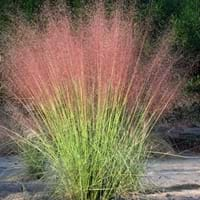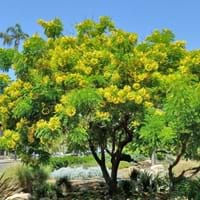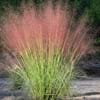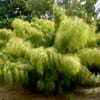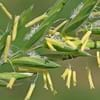Life Span
Perennial
Perennial
Type
Grass
Flowering Plants, Tree
Origin
Northeastern United States, Southeastern United States, Central United States, South-Central United States, Mexico, Caribbean
Brazil
Types
Lindheimer's muhly
Not Available
Habitat
Prairies, Roadsides, Warmer regions
Not Available
USDA Hardiness Zone
4-10
Not Available
AHS Heat Zone
12 - 3
Not Available
Sunset Zone
4, 5, 6, 7, 8, 9, 10, 11, 12, 13, 14, 15, 16, 17, 18, 19, 20, 21, 22, 23, 24
Not Available
Habit
Clump-Forming
Upright/Erect
Flower Color Modifier
Bicolor
Bicolor
Fruit Color
Non Fruiting Plant
Not Available, White
Leaf Color in Spring
Green, Dark Green
Dark Green
Leaf Color in Summer
Light Green
Dark Green
Leaf Color in Fall
Green, Dark Green, Brown
Dark Green
Leaf Color in Winter
Tan, Brown
Dark Green
Leaf Shape
Grass like
Pinnate
Plant Season
Spring, Summer, Fall, Winter
Spring, Summer, Fall
Sunlight
Full Sun, Partial Sun
Partial shade, Full Shade
Growth Rate
Medium
Medium
Type of Soil
Clay, Loam, Sand
Loam
The pH of Soil
Acidic, Neutral, Alkaline
Acidic, Neutral, Alkaline
Soil Drainage
Well drained
Well drained
Bloom Time
Late Summer, Early Fall, Fall
Indeterminate, Summer
Where to Plant?
Ground
Ground
How to Plant?
Divison, Seedlings
Seedlings, Stem Planting
Plant Maintenance
Low
Medium
Watering Requirements
Water frequently while growing, Water more frequently during periods of extreme drought
Requires regular watering
In Summer
Lots of watering
Lots of watering
In Spring
Moderate
Moderate
In Winter
Average Water
Average Water
Soil pH
Acidic, Neutral, Alkaline
Acidic, Neutral, Alkaline
Soil Type
Clay, Loam, Sand
Loam
Soil Drainage Capacity
Well drained
Well drained
Sun Exposure
Full Sun, Partial Sun
Partial shade, Full Shade
Pruning
Prune when plant is dormant, Remove dead or diseased plant parts
Requires very little pruning
Fertilizers
No fertilizers needed
All-Purpose Liquid Fertilizer
Pests and Diseases
Aphids, Ladybug
Red blotch, Thripes
Plant Tolerance
Drought
Drought
Flower Petal Number
Single
Single
Foliage Texture
Fine
Bold
Foliage Sheen
Matte
Matte
Attracts
Ladybug beetles
Not Available
Allergy
Not Available
Not Available
Aesthetic Uses
Showy Purposes
Showy Purposes
Beauty Benefits
Not Available
Not Available
Environmental Uses
Air purification, Shelter for wildlife
Air purification
Medicinal Uses
No Medicinal Use
No Medicinal Use
Part of Plant Used
Whole plant
Whole plant
Other Uses
Used as Ornamental plant
Used as Ornamental plant
Used As Indoor Plant
No
No
Used As Outdoor Plant
Yes
Yes
Garden Design
Dried Flower / Everlasting, Container, Edging, Feature Plant, Mixed Border, Rock Garden / Wall
Shady Tree, Showy Tree
Botanical Name
MUHLENBERGIA capillaris
Cassia leptophylla
Common Name
Pink Muhly Grass
gold medallion tree
In Hindi
Muhly Grass
gold medallion tree
In German
hairawn muhly
gold medallion tree
In French
muhly herbe
gold medallion tree
In Spanish
muhly Grass
árbol medallón de oro
In Greek
Muhly Grass
χρυσό δέντρο μετάλλιο
In Portuguese
muhly grama
árvore medalhão de ouro
In Polish
Muhly Trawa
Drzewo Medalion złota
In Latin
Muhly Grass
aureus arbore
Phylum
Magnoliophyta
Magnoliophyta
Class
Liliopsida
Magnoliopsida
Genus
Muhlenbergia
Cassia
Clade
Angiosperms, Commelinids, Monocots
Angiosperms, Eudicots, Rosids
Tribe
Not Available
Not Available
Subfamily
Not Available
Not Available
Number of Species
Not Available
Not Available
Difference Between Muhly Grass and Cassia Leptophylla
If you are confused whether Muhly Grass or Cassia Leptophylla are same, here are some features about those plants to help you choose better. Many people think that these two plants have the same characteristics, but one can see Muhly Grass and Cassia Leptophylla Information and learn more about it. Fertilizers required for proper growth of Muhly Grass are No fertilizers needed, whereas for Cassia Leptophylla fertilizers required are All-Purpose Liquid Fertilizer. Hence, one should know the basic difference between Muhly Grass and Cassia Leptophylla if you are planning to have them in your garden to enhance its beauty.
<
Flowering PlantsImportance of Muhly Grass and Cassia Leptophylla
Want to have the most appropriate plant for your garden? You might want to know the importance of Muhly Grass and Cassia Leptophylla. Basically, these two plants vary in many aspects. Compare Muhly Grass and Cassia Leptophylla as they differ in many characteristics such as their life, care, benefits, facts, etc. Every gardener must at least have the slightest clue about the plants he wants to plant in his garden. Compare their benefits, which differ in many ways like facts and uses. The medicinal use of Muhly Grass is No Medicinal Use whereas of Cassia Leptophylla is No Medicinal Use. Muhly Grass has beauty benefits as follows: Not Available while Cassia Leptophylla has beauty benefits as follows: Not Available.
Compare Facts of Muhly Grass vs Cassia Leptophylla
How to choose the best garden plant for your garden depending upon its facts? Here garden plant comparison will help you to solve this query. Compare the facts of Muhly Grass vs Cassia Leptophylla and know which one to choose. As garden plants have benefits and other uses, allergy is also a major drawback of plants for some people. Allergic reactions of Muhly Grass are Not Available whereas of Cassia Leptophylla have Not Available respectively. Having a fruit bearing plant in your garden can be a plus point of your garden. Muhly Grass has no showy fruits and Cassia Leptophylla has no showy fruits. Also Muhly Grass is not flowering and Cassia Leptophylla is flowering. You can compare Muhly Grass and Cassia Leptophylla facts and facts of other plants too.
